Plant Care Expert Guides
Top 10 Best Types of Peppers You Can Grow in Your Garden
Growing peppers in your garden can be a rewarding and flavorful experience. With hundreds of pepper varieties available, choosing the best types can be overwhelming. Peppers come in various types, each with its own unique flavor, heat level, and use in cooking. But with so many varieties available, which ones should you choose for your garden? In this post, I’ll walk you through the top 10 best types of peppers you can grow in your garden. Let’s dive in!
Growing peppers at home offers several benefits. First off, you get to enjoy fresh, homegrown produce that can enhance your meals. Peppers are also versatile – from adding heat to your dishes with hot peppers like Habanero or Jalapeño, to using sweet peppers like Bell Pepper in salads or stir-fries. Additionally, they’re relatively easy to grow in most climates, making them perfect for gardeners of all skill levels.
But how do you decide which pepper varieties to plant? Don’t worry, I’ve got you covered!
1. Bell Pepper
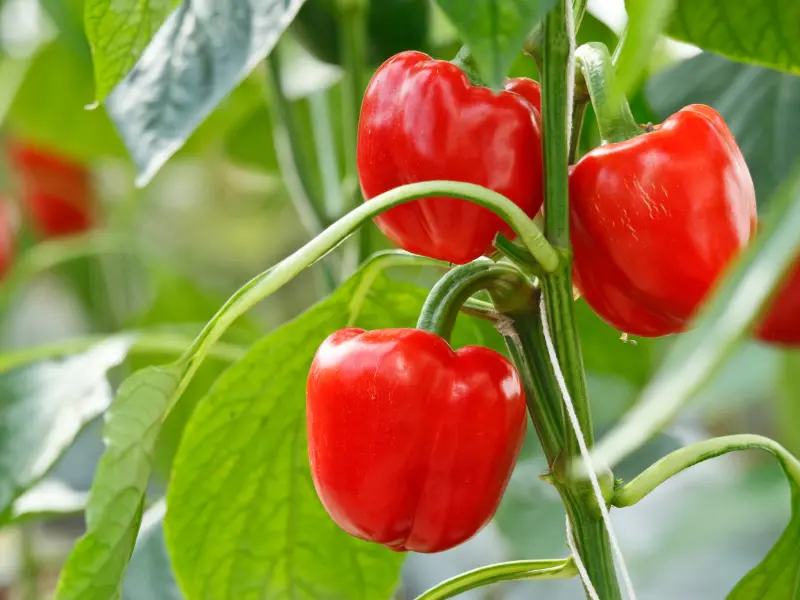
The beginner-friendly bell pepper (Capsicum annuum) is a staple in many gardens, known for its mild sweetness and crisp texture. Available in vibrant shades of red, yellow, and green, bell peppers are perfect for fresh salads, stir-fries, and stuffed dishes. Sow seeds indoors 10 to 12 weeks before the last frost to ensure a vibrant harvest. Bell peppers thrive in full sun and well-drained soil. They require a longer growing season, so if you’re planting in a cooler climate, consider starting them indoors.
-
Name: Bell pepper (Capsicum annuum)
-
USDA Hardiness Zones: 9-11
-
Light: Full sun
-
Soil Needs: Rich, loamy, well-drained soil
-
Days to Maturity: 60-80
-
Scoville Heat Units: 0
2. Jalapeño Pepper
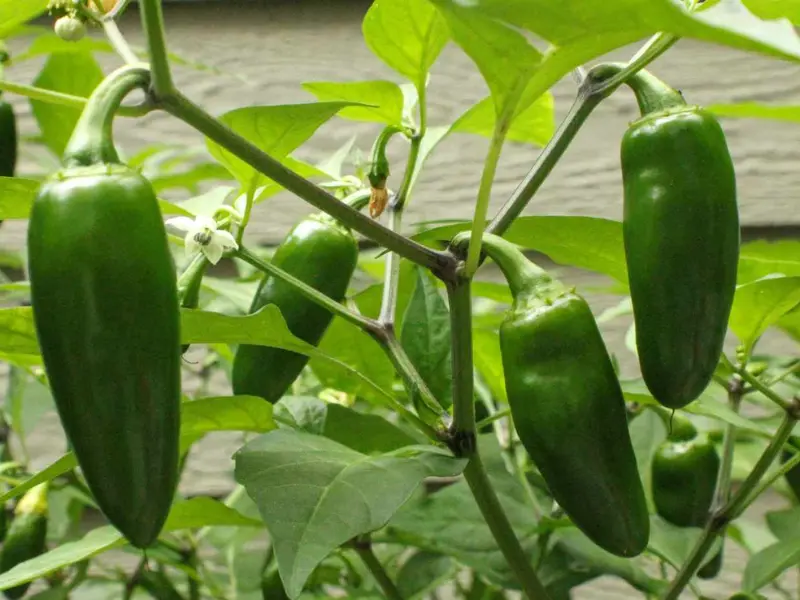
Jalapeños (Capsicum annuum) is a favorite for salsa lovers. Among the different types of peppers, jalapeños are one of the most popular peppers due to their moderate heat and versatility. These spicy, versatile peppers can be harvested green for mild heat or left to ripen to red for a sweeter kick. Jalapeños thrive in warm climates and can be used fresh, pickled, or roasted. Look for “corking” — small lines on the skin that indicate peak ripeness. If you like a bit of heat in your meals, Jalapeños are the way to go! These peppers are moderately spicy and can be used in everything from salsas to jalapeño poppers. Plus, they’re relatively easy to grow.
-
Name: Jalapeño pepper (Capsicum annuum)
-
USDA Hardiness Zones: 9-11
-
Light: Full sun
-
Soil Needs: Rich, loamy, well-drained soil
-
Days to Maturity: 80-100
-
Scoville Heat Units: 2,500-8,000
3. Banana Pepper
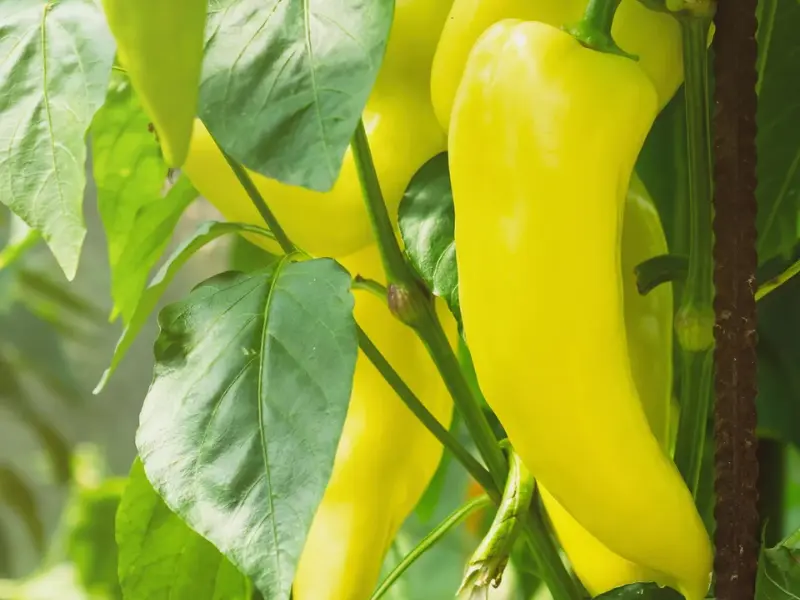
The banana pepper (Capsicum annuum) is an excellent choice for pickling and frying. It has a mild, slightly tangy flavor that intensifies as it ripens from yellow to red. Banana peppers grow quickly and are perfect for container gardening, making them ideal for small spaces. Among varieties of peppers that are easy to grow, banana peppers are highly recommended.
-
Name: Banana pepper (Capsicum annuum)
-
USDA Hardiness Zones: 9-11
-
Light: Full sun
-
Soil Needs: Rich, loamy, well-drained soil
-
Days to Maturity: 60-80
-
Scoville Heat Units: 0-500
4. Poblano Pepper (Ancho Pepper)
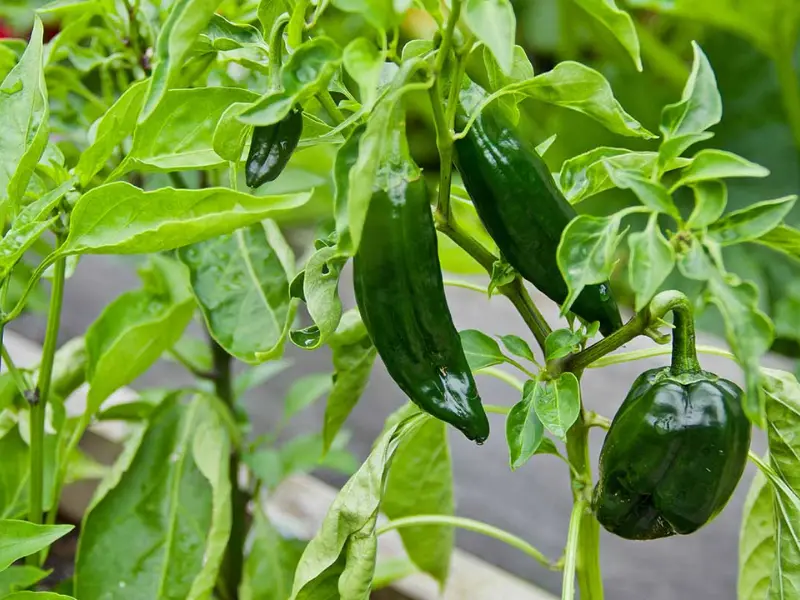
Poblano peppers (Capsicum annuum) are a versatile Mexican favorite that can be harvested green or left to mature into spicy ancho chiles. These peppers are great for stuffing, roasting, and making mole sauce. Their sturdy walls make them ideal for chiles rellenos.
-
Name: Poblano pepper (Capsicum annuum)
-
USDA Hardiness Zones: 9-11
-
Light: Full sun
-
Soil Needs: Rich, loamy, well-drained soil
-
Days to Maturity: 65-80
-
Scoville Heat Units: 1,000-1,500
5. Habanero Pepper
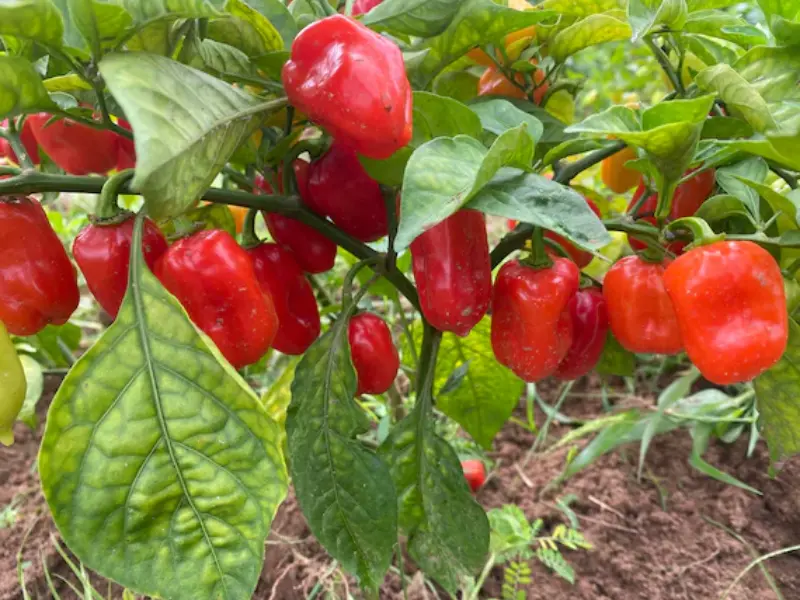
Habanero peppers (Capsicum chinense) are one of the hottest peppers you can grow, and it packs a serious punch in any dish. Known for its fruity, citrus-like flavor, the Habanero is perfect for making spicy sauces, hot salsas, or adding heat to your favorite recipes. Habaneros need a long, warm growing season. They do best in hot, sunny climates with well-drained soil.
-
Name: Habanero pepper (Capsicum chinense)
-
USDA Hardiness Zones: 9-11
-
Light: Full sun
-
Soil Needs: Rich, loamy, well-drained soil
-
Days to Maturity: 80-100
-
Scoville Heat Units: 100,000-350,000
6. Shishito Pepper
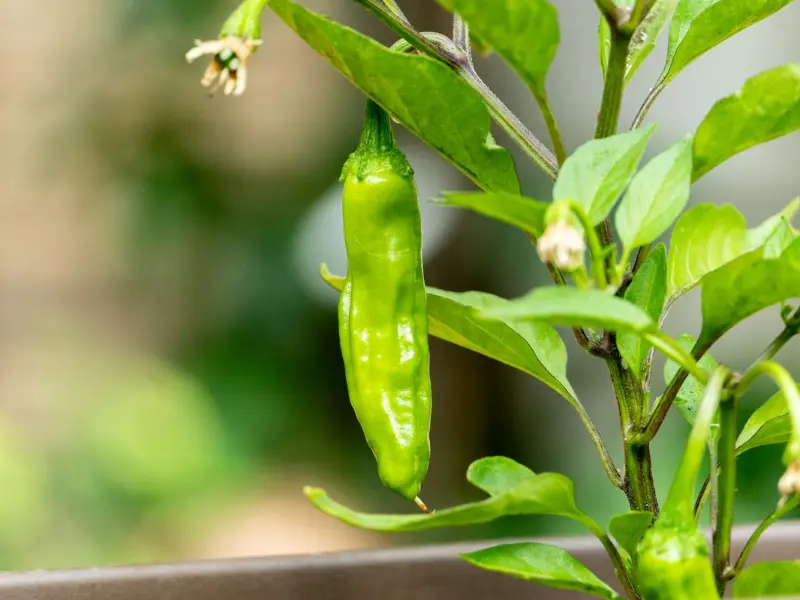
Shishito peppers (Capsicum annuum var. grossum) are small, wrinkled frying peppers with a mild flavor. About one in ten peppers may surprise you with a bit of heat. Shishitos are best enjoyed grilled, blistered, or sautéed with olive oil and sea salt. Shishito peppers are popular in Japanese cuisine. Shishito peppers grow best in warm climates and require full sun. They’re fairly easy to grow and often have a high yield. For those exploring different types of peppers with subtle heat, shishito peppers are an excellent choice.
-
Name: Shishito pepper (Capsicum annuum var. grossum)
-
USDA Hardiness Zones: 9-11
-
Light: Full sun
-
Soil Needs: Rich, loamy, well-drained soil
-
Days to Maturity: 60-80
-
Scoville Heat Units: 50-200
7. Anaheim Pepper
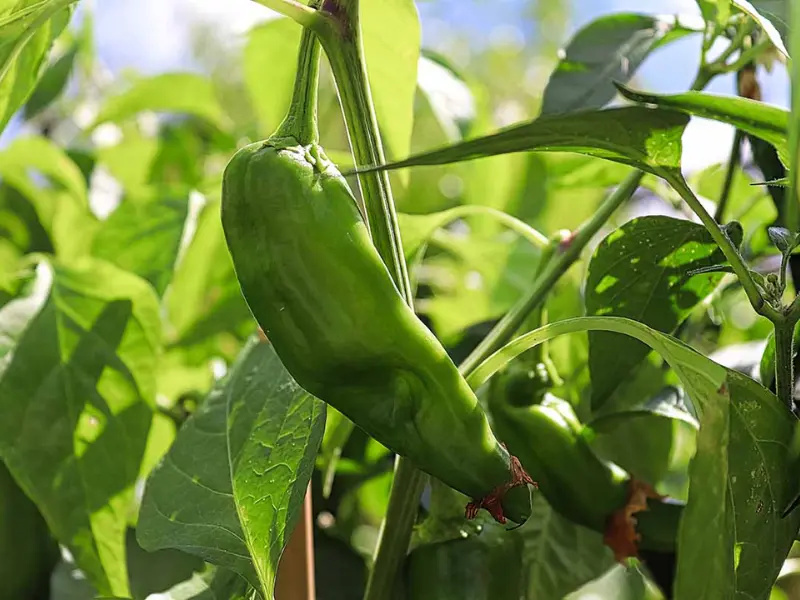
Anaheim peppers (Capsicum annuum ‘Anaheim’) are large, sweet peppers with a mild heat. They’re perfect for roasting, stuffing, and adding to sauces. Green Anaheims are harvested early, while mature red peppers are used to make dried chile peppers.
-
Name: Anaheim pepper (Capsicum annuum ‘Anaheim’)
-
USDA Hardiness Zones: 9-11
-
Light: Full sun
-
Soil Needs: Rich, loamy, well-drained soil
-
Days to Maturity: 65-85
-
Scoville Heat Units: 50-2,500
8. Cherry Pepper
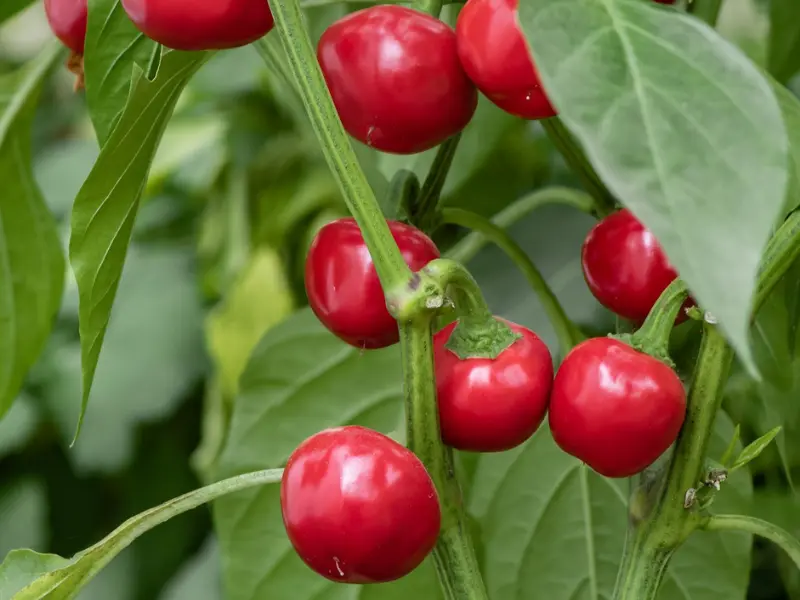
Cherry peppers (Capsicum annuum) are small, round, and slightly spicy, making them perfect for pickling, stuffing, and adding to charcuterie boards. Their vibrant red color and mild heat make them a garden favorite, adding a burst of flavor to salads, sandwiches, and pizzas. These peppers grow best in well-drained, fertile soil with plenty of sun. They’re easy to grow and require moderate watering.
-
Name: Cherry pepper (Capsicum annuum)
-
USDA Hardiness Zones: 9-11
-
Light: Full sun
-
Soil Needs: Rich, loamy, well-drained soil
-
Days to Maturity: 60-85
-
Scoville Heat Units: 2,500-5,000
9. Thai Chili Pepper
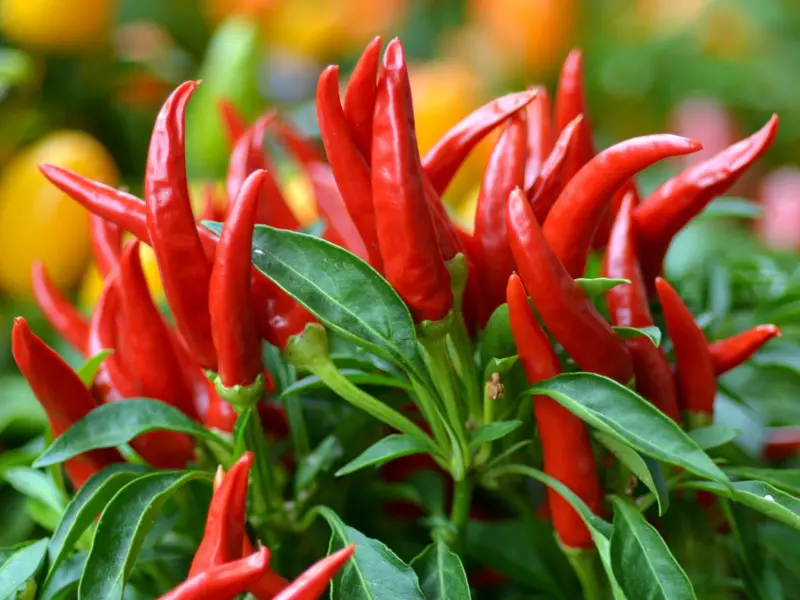
Thai chili peppers (Capsicum annuum) bring fiery heat to Southeast Asian cuisine. Also known as bird’s eye chilis, these tiny peppers can pack up to 40 times the heat of a jalapeño. They are excellent for making spicy sauces and adding heat to dishes. For gardeners seeking different types of peppers with intense heat, Thai chilis is a go-to option.
-
Name: Thai chili pepper (Capsicum annuum)
-
USDA Hardiness Zones: 9-11
-
Light: Full sun
-
Soil Needs: Rich, loamy, well-drained soil
-
Days to Maturity: 75-95
-
Scoville Heat Units: 50,000-100,000
10. Cayenne Pepper
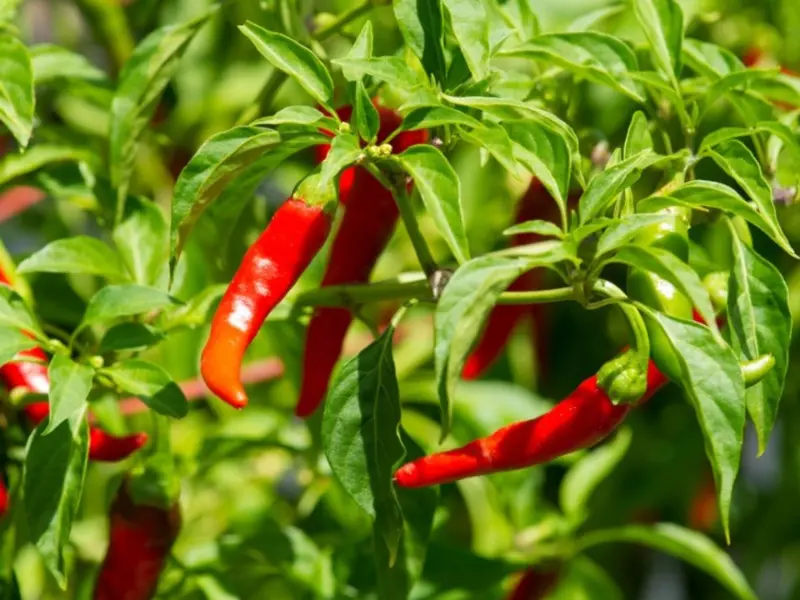
Cayenne Peppers in Garden
eurobanks / Getty Images
Cayenne peppers (Capsicum annuum) are slender, medium-hot peppers that add vibrant heat to any dish. They are often dried and ground into cayenne powder, a staple in many spice racks. These peppers thrive in warm climates and are easy to grow.
-
Name: Cayenne pepper (Capsicum annuum)
-
USDA Hardiness Zones: 9-11
-
Light: Full sun
-
Soil Needs: Rich, loamy, well-drained soil
-
Days to Maturity: 70-100
-
Scoville Heat Units: 30,000-50,000
How to Choose the Best Peppers for Your Garden
When selecting peppers for your garden, consider these factors:
-
Climate: Some peppers, like Habaneros and Ghost Peppers, require hot climates, while others, like Bell Peppers and Poblanos, can handle a bit of cool weather.
-
Space: If you have limited space, consider growing smaller varieties like Cherry Peppers or Shishitos.
-
Heat Level: Know your heat tolerance! If you love spice, go for Jalapeños, Habaneros, or Ghost Peppers. For milder heat, try Bell Peppers, Anaheim, or Poblano.
Tips for Growing Peppers Successfully
-
Sunlight is Key: Peppers thrive in full sun with at least 6-8 hours of direct sunlight per day.
-
Fertilize Regularly: Use balanced fertilizers to encourage healthy growth and higher yields.
-
Water Consistently: Keep the soil evenly moist, especially during hot summer months.
-
Stake Your Plants: Taller varieties may need support as they produce fruit.
-
Harvest Promptly: Pick peppers as soon as they’re ready to encourage more production.
FAQ: Common Pepper Growing Questions
What is the easiest pepper to grow?
Bell peppers, jalapeños, and banana peppers are beginner-friendly and require minimal maintenance.
Which peppers are best for pickling?
Banana peppers, cherry peppers, and jalapeños are ideal for pickling due to their mild heat and crisp texture.
How do I increase pepper yield?
Provide plenty of sunlight, fertilize regularly, and ensure consistent watering. Harvesting ripe peppers frequently also encourages more fruit.
Now that you know the best types of peppers to grow, get ready to spice up your garden and your kitchen!
Conclusion
Growing peppers is a fantastic way to spice up your garden and your meals! From sweet Bell peppers to fiery Ghost peppers, there’s a pepper variety for every gardener and every taste. By choosing the right types for your space and climate, you can enjoy a bountiful harvest of peppers that add flavor, color, and heat to your cooking.
If you’re ready to grow your own peppers, start with these top 10 varieties and experiment with different uses in the kitchen. Remember, gardening is all about experimenting and learning – so have fun and enjoy the process! Happy gardening!
